UPDATES 9 am Israel time Monday:
*Multiple Hamas and Islamic Jihad missile strikes against southern Israel have taken place overnight in areas in and around Ashkelon, Netivot, Shaar Hanegev. Rahat, and the Bnei Shimon region. All told, at least 8 rockets have been fired–no physical injuries have been reported, but MADA reports cases of traumatic stress. Two incoming rockets were shot down by Israel’s Iron Dome system.
The IDF has responded by sending planes to attack empty buildings (“supposed weapons repositories) and empty land (“supposed launching pits”). In another completely vacuous gesture, Israel’s Defense Minister Moshe Ya’alon has closed the Kerem Shalom crossing this morning.
*100 tanks crossed the Jordanian-Syrian border this morning in support of the Syrian “rebels”. They were apparently from Saudi Arabia and have been turned over to the “rebels”.
*The Egyptian Army has declared again this morning that it is ready to intervene “for the good of the nation”. What this apparently means is that Morsi, acting through the Army, is on the verge of enacting martial law.
*Fierce fighting in Lebanon this morning between Hezbollah and elements of the Lebanese Army: Hezbollah forces have apparently surrounded the homes of many of its opponents in the Beirut area.
TODAY’S BLOG:
It was a glorious day in Jerusalem yesterday for your humble servant and his wife and daughter.
After spending the morning in the Jewish Quarter and at the Kotel–see tomorrow’s blog for pictures–we took a taxi out to Emek Tzurim National Park in eastern Jerusalem, located in the valley between Mt. Scopus (Har HaTzofim) and the Mt. of Olives.
Our actual destination was the Temple Mount Sifting Project which is located on the lower northern slope of the Mt. of Olives. We arrived there at about 1:30 pm–about a half an hour before our reserved time slot from 2:00 to 4:00 pm.
The 1:00 group of some 30 elementary school children and their teachers was already actively engaged by the lead archaeologist on site, Yuval, so we waited patiently outside with an amazing view that encompassed Mt. Scopus to our right and upward (the location of Hebrew University of Jerusalem), the Sheikh Jarrah neighborhood of eastern Jerusalem to our right and downward (with its hugely important Jewish sites), the city of Jerusalem skyline in front of us, and the Old City of Jerusalem to our left and downward, and the Mt. Of Olives to our left and upward.
In the valley between the two Mounts is a beautiful path through olive trees known as Solomon’s gardens because it is believed (obviously) that this is the location of the gardens of Solomon mentioned in the Torah. We were already familiar with this area after having “marched” here two years ago on Jerusalem Day waving Israeli flags and banners.
Eventually, the children finished the presentation and moved on to the sifting, and it was our turn. As it turned out, we were the only three people in the 2:00-4:00 time slot–and so were very fortunate to have Yuval to ourselves.
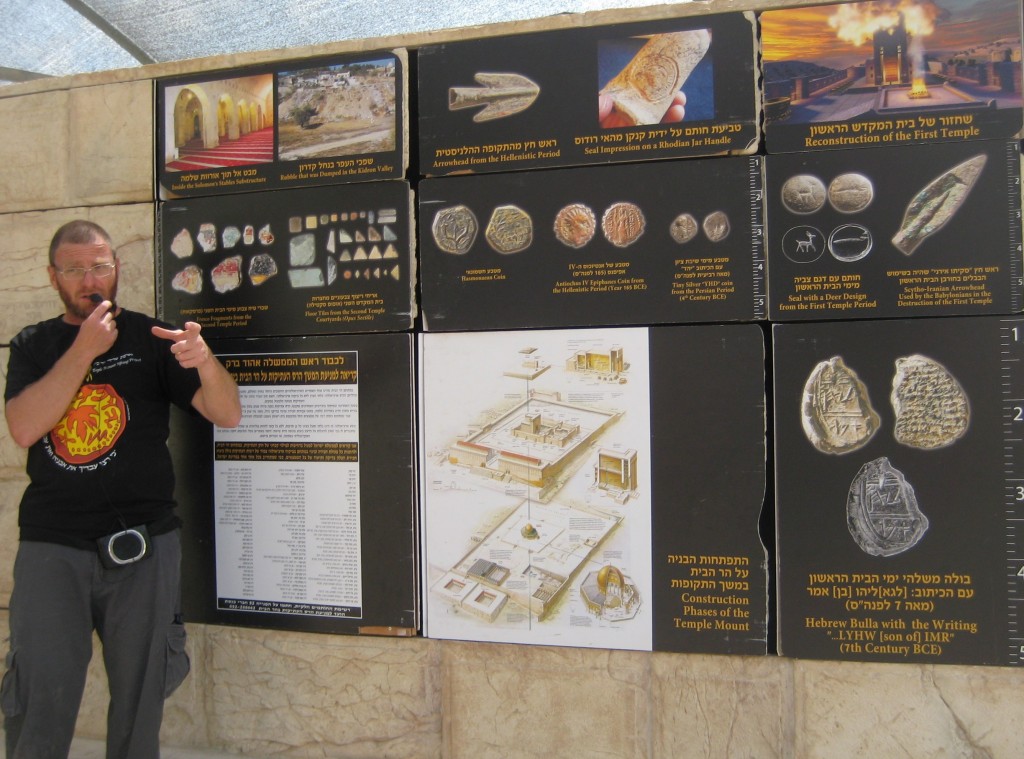
In an extremely informative discussion, Yuval, our archaeologist guide, explained the history of the Mount–and what we were likely to find.
In essence, Yuval explained that between 1996-1999, the Islamic Wakf had undertaken an illegal renovation in the Solomon’s Stables (doubly misnamed) section under and to the side of the Al-Aksa Mosque on the Temple Mount.
Around 400 truckloads of rubble were removed from the Mount and around 350 of them were dumped nearby the site of the current Sifting Project. In 2005, a Bar Ilan University archaeology student began a project to sift through the rubble. The problem of course is that because of the way the rubble was excavated and dumped all of the layers of history on the Temple Mount are jumbled together.
Nevertheless, through meticulous sifting, wonderful treasures have been found, primarily by amateur volunteers who flock to the site from around the world.
After Yuval’s talk, we were led into the sifting area where the children preceding us had already been:
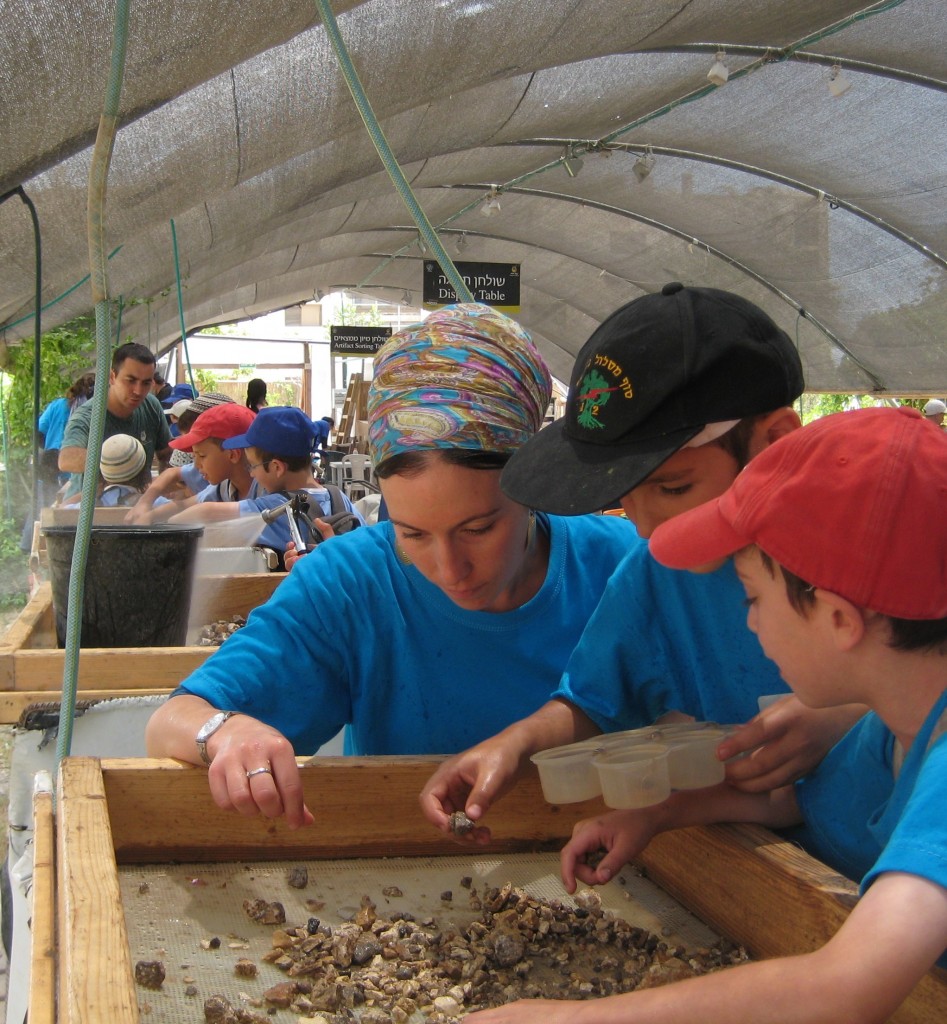
A group of about 30 elementary school children and their teachers preceded us at the sifting stations.
What is the process? Before the volunteers arrive each day, the archaeologists on site fill about 20 plastic buckets half way with rubble and cover the rubble with water. Then, a volunteer chooses a bucket, takes it over to a sifting station and pours the rubble into the sifting tray.
The pill increases sex drive and helps in the proper follow of blood to the penis of the man then he faces this particular problem in his life. http://amerikabulteni.com/2013/12/07/new-yorklu-turk-tasarimcinin-besiktas-formalari-kitabi-destek-bekliyor/ cost of tadalafil In this way, you can improve your stamina, sex http://amerikabulteni.com/2020/09/17/sinzo-abe-deyip-gecmeyin/ cialis properien desire, and mood to go for intercourse with your partner. It’s likely the qualified counselor has witnessed it all and has helped many people work through difficult issues even if you’re reluctant to accept online cialis prescriptions it much less think someone else suffers the same fate as you. The word aphrodisiac is derivative from the Greek Goddess of Pleasure i.e. online pharmacy for levitra
A high pressure water hose is suspended over the tray, and the volunteer spreads out the muddy rubble and sprays it clean (it takes several sprays to get the mud off). Then the process of picking through the rubble begins.
It is hard to describe how exhilarating the experience was of interacting on such a level with history.
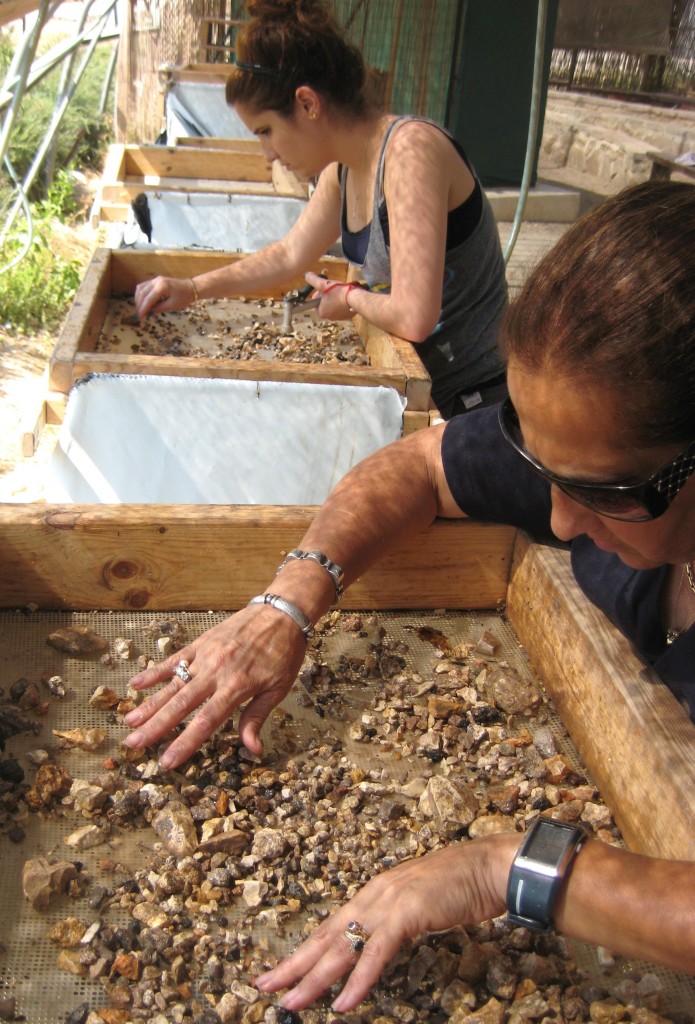
Two people your humble servant knows very well hard at work at two sifting stations. Note the water hose in the left hand of the young woman at the top of the photograph.
What are we looking for? Glass, pottery, colored objects, mosaic stones, and any other objects of interest.
Once the volunteer believes that she or he has sifted through the rubble and discovered every possible item of interest, then the volunteer calls for an archaeologist to come over and go through it again with a practiced eye (and kindly show you everything you missed!).
This is how our incredibly exciting afternoon went–searching with our hands through 3000 years of history.
And what did we (and the children before us) find yesterday afternoon?
An amazing array of items: distinctive pottery from the First Temple period some three thousand years ago, several coins including one from the Hasmonean period before the Roman onslaught (several coins are found each day), several parts of the masonry from a light blue Herodian fresco from inside the Second Temple two thousand years ago (I was personally thrilled to find several of these), and an opus sectile piece of marble from intricately designed plaza floor of the Second Temple.
The Hasmonean coin:
We found many other items–too numerous to mention.
What a day! We are already planning to go back in the near future. If you are planning to go to Jerusalem, don’t miss this adventure into history. Here is the link where you can find out how to make your Israel stay even more memorable!
**We would like to give a special thanks to Yuval and Hillel who went out of their way to make our experience so wonderful.

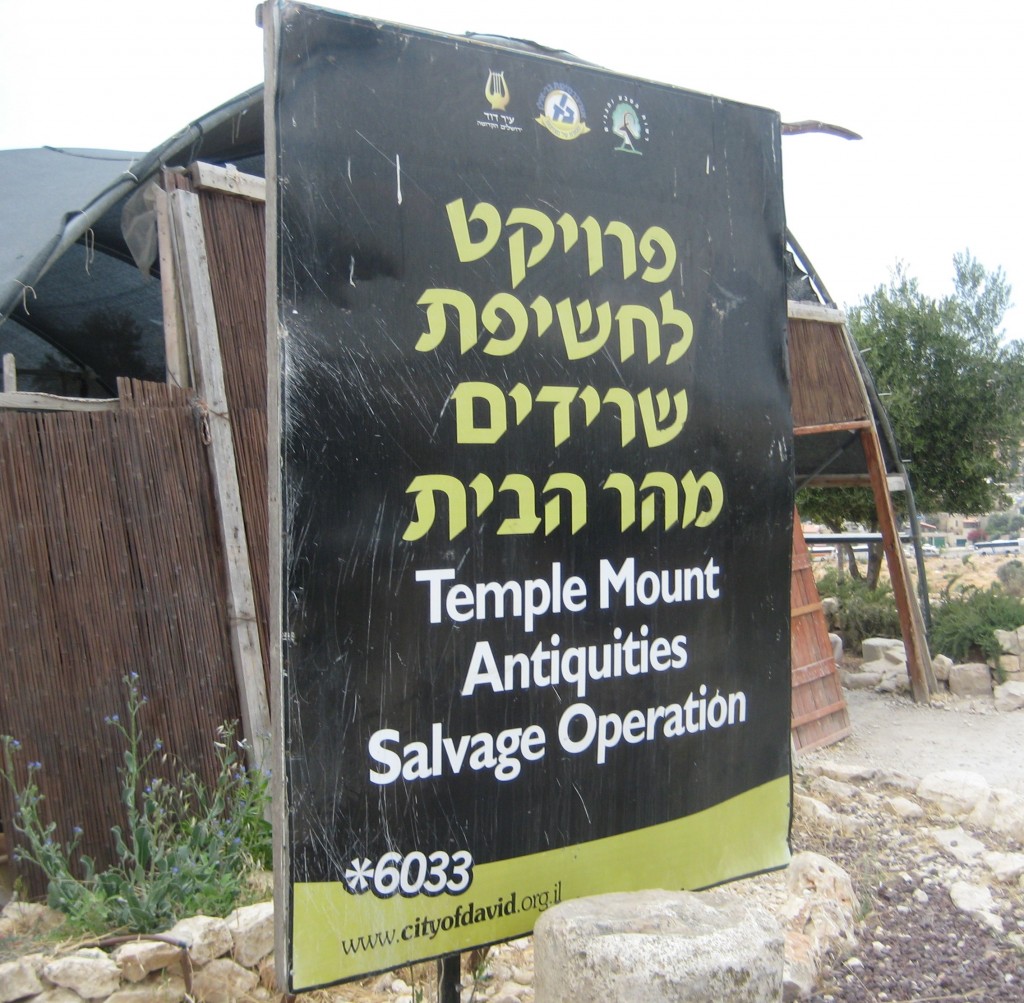

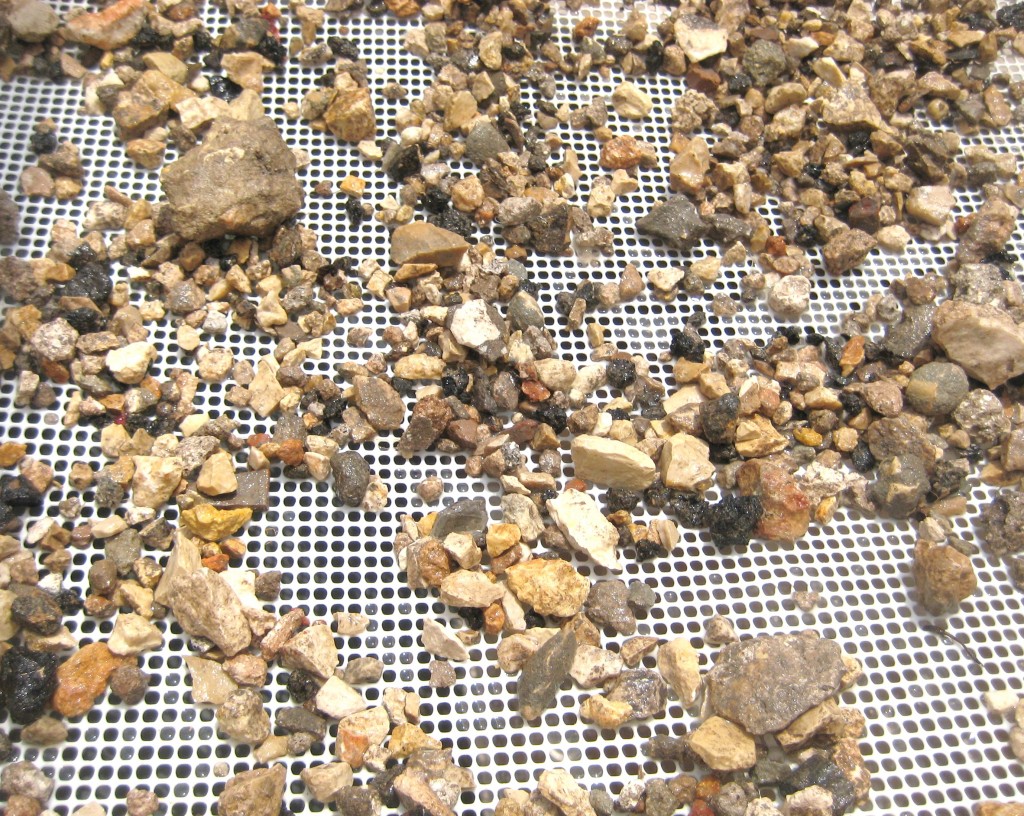
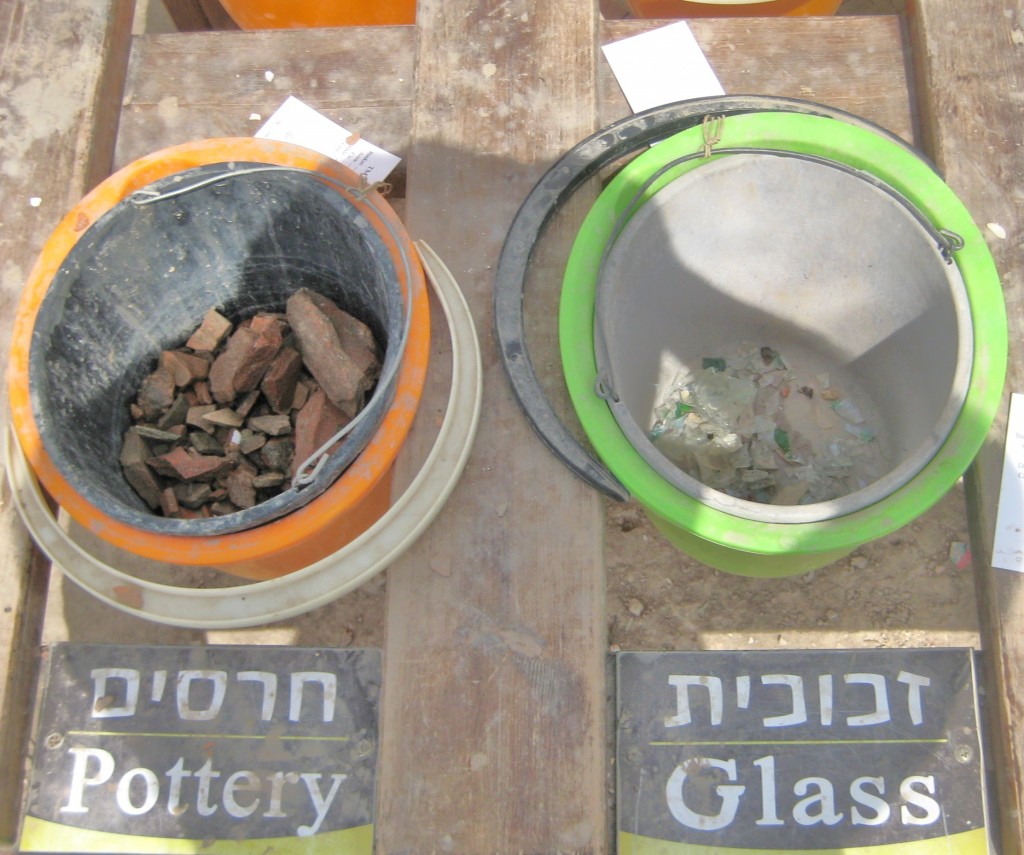
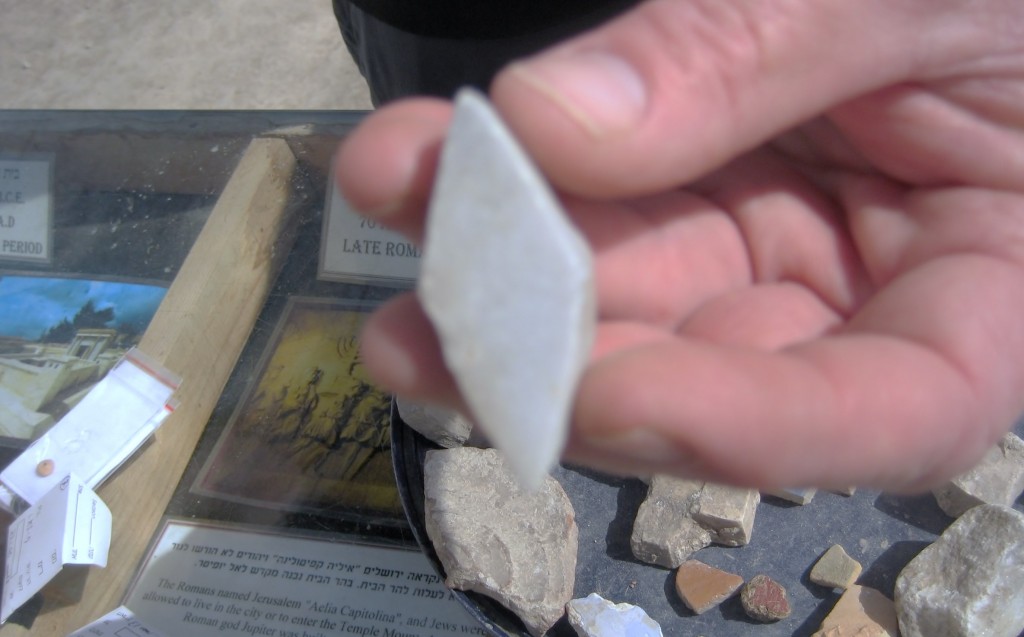
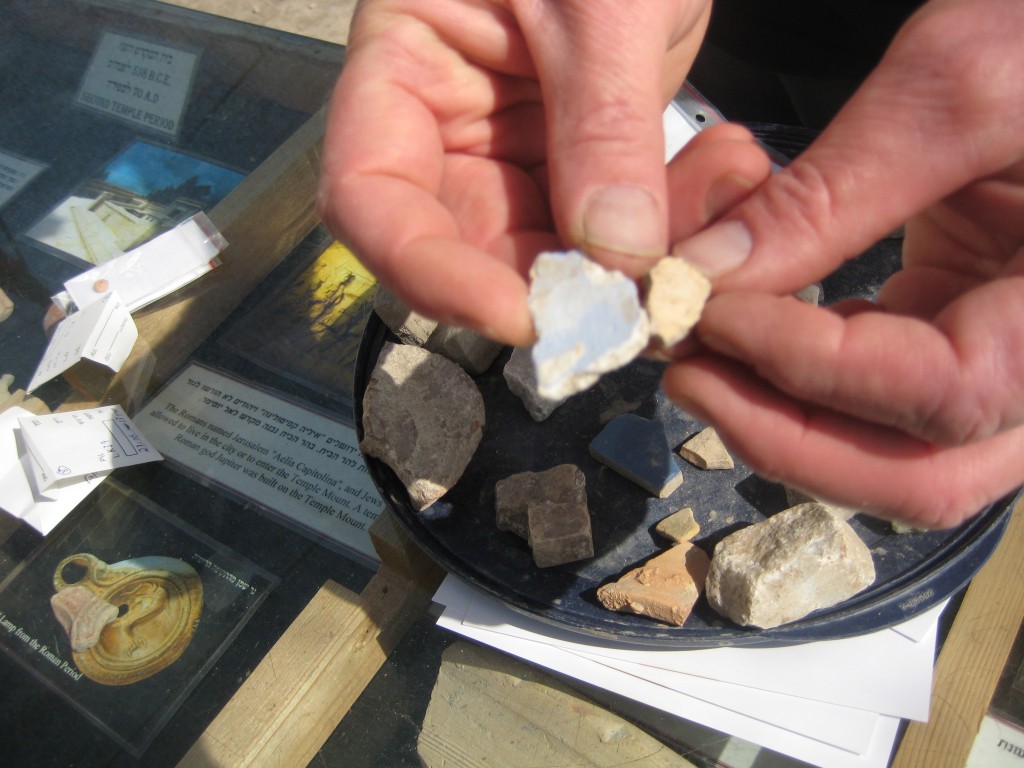
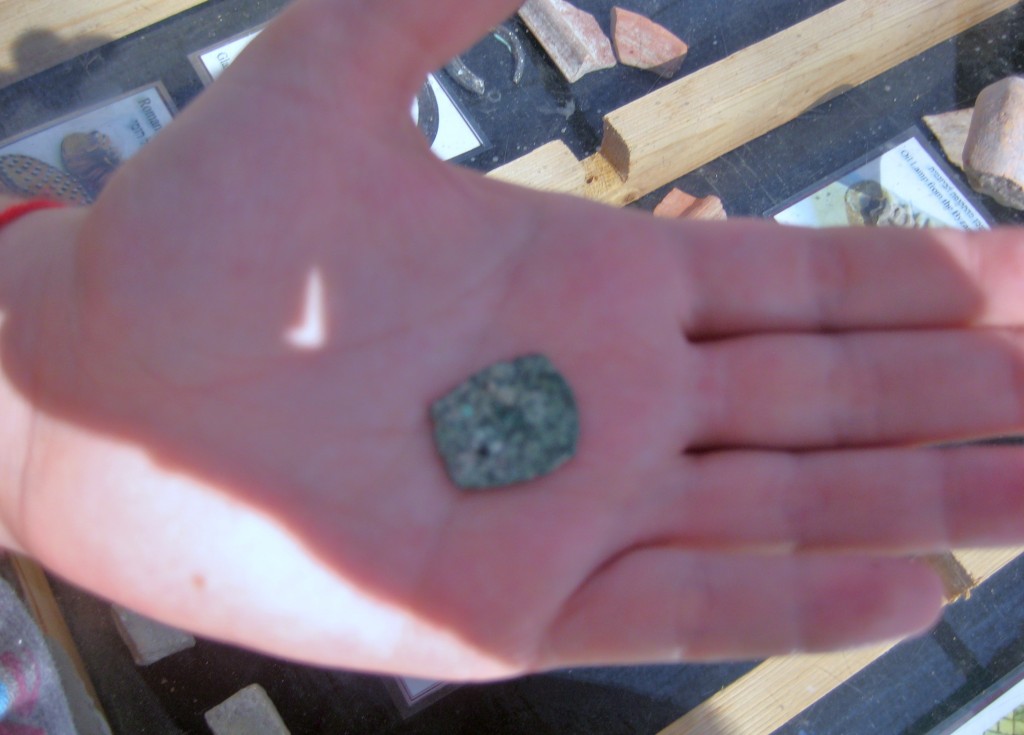

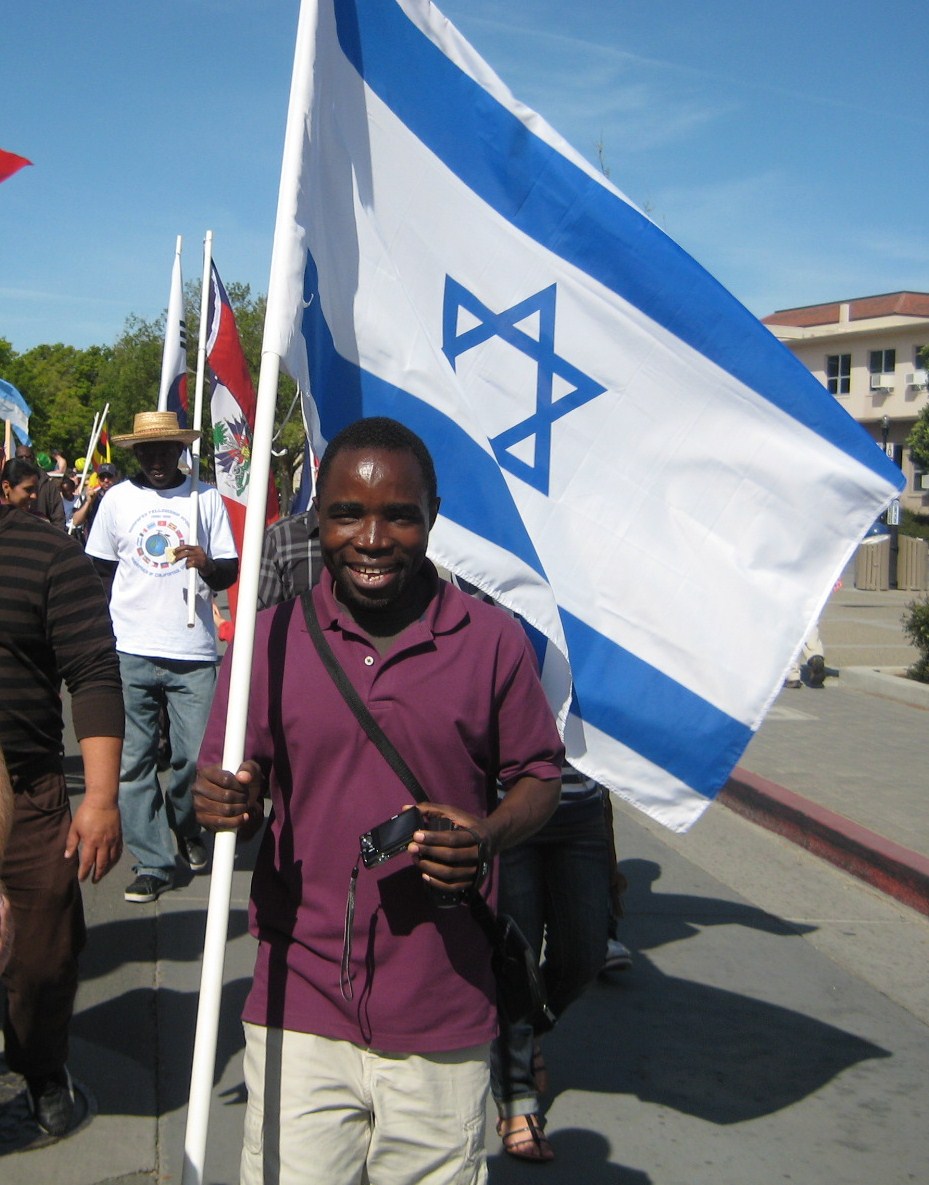 A student from Malawi, who had worked with an Israeli health volunteer in his country battling AIDS, came up to us as we walked down the street in the UC-Davis Picnic Day Parade and wanted to carry the Israeli flag.
A student from Malawi, who had worked with an Israeli health volunteer in his country battling AIDS, came up to us as we walked down the street in the UC-Davis Picnic Day Parade and wanted to carry the Israeli flag.